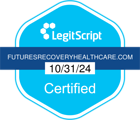
Ecstasy Addiction
Ecstasy is a designer drug, also known as a “club drug,” that is manufactured in illicit laboratories in many parts of the world. Originally, ecstasy was just the chemical MDMA; but now, according to the Drug Enforcement Agency, ecstasy abuse often occurs when MDMA is mixed with other drugs, such as methamphetamine or ketamine, and even over-the-counter cough suppressants.
There is no regulation in place concerning the manufacture of ecstasy because it is a Schedule I substance. This means that there is no legitimate, medical use of the drug, and it is only manufactured for illegal, recreational purposes.
The history of MDMA spans many decades. Originally synthesized in the early part of the 1900s, it was used by a portion of the psychological community due to its ability to break down communication barriers and inhibitions during sessions. As explained by the National Institute on Drug Abuse, when the drug became widely and legally available on the street, the Drug Enforcement Agency banned the substance for all uses.
How Is Ecstasy Abused?
Known on the street by names such as “beans,” “lover’s speed” or “peace,” MDMA and the other drugs often blended with it come in a tablet form. They are available in a variety of colors with logos stamped on the tablet to identify different brands or combinations of drugs. The end user of the product, however, has no resource or recourse in determining what drugs are actually contained in the pill.
There are several ways in which individuals who participate in the party culture associated with club drugs will take ecstasy. One method, known as “stacking” involves taking at least three tablets at one time. Another, known as “piggy-backing,” according to the DEA, is the taking of multiple tablets or doses with small intervals. For instance, rather than taking three pills as once, a user might space out the doses in half-hour increments.
Mixing Ecstasy and Alcohol
Mixing drugs such as ecstasy with alcohol is potentially very dangerous. Ecstasy is a stimulant, which on the surface seems like a “safe” drug to mix with a depressant, such as alcohol. However, when an individual does so, they put themselves in a position to stay awake and alert far longer than if they were consuming alcohol alone. While this may be the point – to stay awake and be able to participate in the party subculture for longer periods of time – it also allows an individual to drink far more alcohol during a shorter period of time. Combining stimulants and alcohol can result in alcohol poisoning, which can be fatal in certain circumstances. Additionally, mixing MDMA with alcohol can make one feel nauseous, induce vomiting and increase dehydration. Ecstasy’s ability to deregulate body temperature and alcohol’s ability to raise body temperature can lead to death due to hypertension.
The Dangers of Ecstasy Abuse
According to a study conducted by the Substance Abuse and Mental Health Services Administration (SAMHSA), more than 17,865 hospital visits in 2008 involved ecstasy.
While more than three-quarters of those visits involved ecstasy in combination with another drug, one-quarter were related only to ecstasy abuse. The physical effects of ecstasy abuse include:
- Increased body temperature
- Blurry vision
- Dehydration
- Hypertension
- Arrhythmia (or an irregular heartbeat)
- Grinding of the teeth or jaw
- Cramping
These symptoms alone are frightening when taken in perspective; however, there are other negative effects of ecstasy that affect one’s personality and quality of life, including increased anxiety and irritability, a lack of enjoyment from sex, learning disabilities, aggression, inability to sleep, and depression.
Residential Inpatient Treatment for Ecstasy Addiction
A residential inpatient treatment facility for drug addiction is a home-like setting where patients live together and support each other through the recovery process. By choosing a residential inpatient facility for drug addiction treatment, the patient immediately becomes free of those negative influences that may be detrimental to recovery.
Depending on the facility, the clients will have access to a wide range of methods and practices for the treatment of addiction. Some of these methods might include:
- Evidence-based therapies including cognitive behavioral therapy
- Holistic and complementary methods, including spiritual counseling, music or art therapy, or therapeutic massage or acupuncture
- Support groups both formal and informal
- Nutritional counseling
- Family counseling and therapy
An individual suffering from ecstasy abuse and addiction can reclaim their life. All it takes is an effective treatment program and the help of professional counselors and staff who have the experience and expertise to help them find their way. If you’d like information about our addiction treatment programs, contact us here at Futures today.




